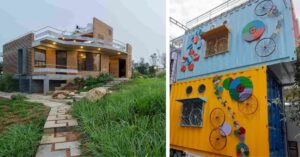Solar-Powered Mud House Harvests 10,000 Litres of Rain, Stays Naturally Cool
Built using mud and debris, this low-cost home in Bengaluru is all things eco-friendly - from solar panels and rainwater harvesting to organic garden and greywater recycling!

Bengaluru-based Reva Malik typically starts her day by observing the amount of sunlight penetrating directly through the giant windows and into their terracotta-tiled living room. The amount of sunlight and other weather conditions decide what food will be prepared in the solar cooker on the day. For example, in case of harsh sunlight, Reva will prepare millet-based food.
Next, she draws recycled greywater from a tank, and waters the 40 varieties of organic vegetables and fruits growing in her backyard. She then places a glass jar, in which tea leaves are being soaked, directly under the sun. An hour later, she consumes the tea with her husband, Ranjan, while enjoying the pleasant temperature, thanks to ample cross ventilation.
Meanwhile, Ranjan has already kept their phones and laptops to recharge under the sun, while it’s still out, as the power is generated from the solar panels placed on the roof.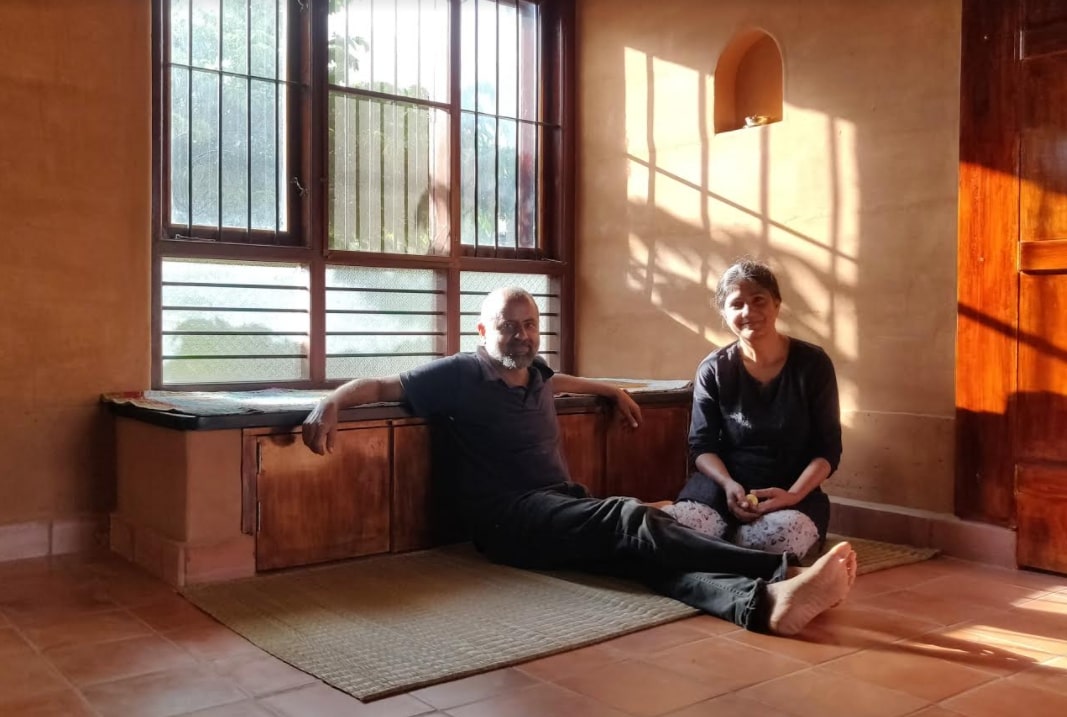
If, at this point, you’re wondering if their lifestyle could get any more sustainable, this would be a good time to mention that their home is built from stabalised mud and recycled material. In addition, it also has an underground rainwater harvesting system, which can store up to 10,000 litres of water.
The house was designed and constructed by Mahijaa, a design consultancy firm. Its parent company, Mrinmayee, was founded in 1988 by Dr Yogananda M R, an alumnus of the Indian Institute of Science (IISc), to emphasise on construction using stabalised mud and other eco-friendly construction materials and technologies.
By recycling and using locally-available material, Mahijaa brought down the overall cost of the house by 15% as compared to a conventional frame-structure, with prime emphasis on reducing the embodied-energy considerably.
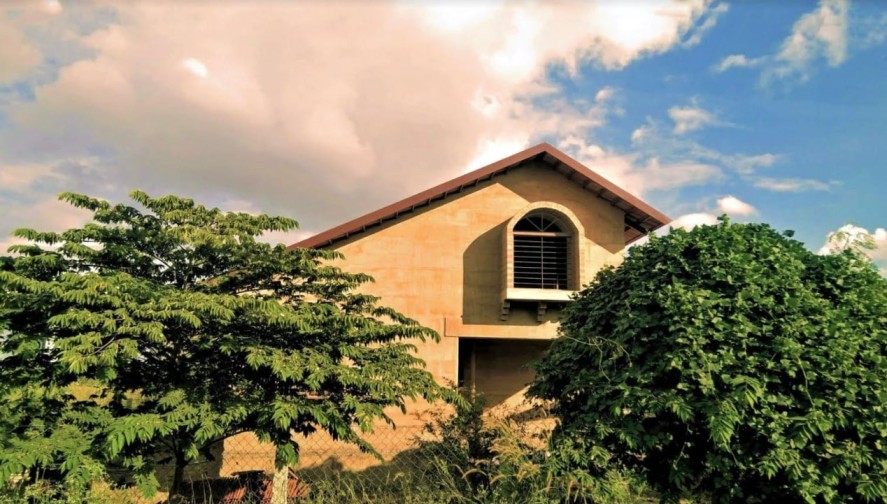
“Having lived the majority of our lives in an urban setup, we really wanted to connect with nature,” Reva, who runs a consulting firm with Ranjan, tells The Better India. She adds, “In 2018, we were bombarded with news of water scarcity and lake frothing. This bothered us, and so we decided to build an eco-friendly house on our plot the same year. Our aim is simple — to have a minimalist lifestyle and reduce our carbon footprint. We were fortunate enough to come across Mahija, a firm that also considers soil and mud to be sacred. They understood our ethos and built us our dream home.”
What makes the home eco-friendly?
The house, spread over 770 square feet, is a unique single-roof rammed earth home that sits on a mud-concrete trench foundation. It is a single space, divided into a kitchen, living room and a mezzanine which acts as a study and bed.
“The foundation of the house has been made by compressing recycled construction debris (mud concrete), thus eliminating the need for cement concrete. The load-bearing building design is also made earthquake-resistant, like all of our buildings, by judicial usage of steel wherever necessary. This also ensures a longer life span,” Pramod A V, a structural engineer at Mahijaa, tells The Better India.

Likewise, other parts of the house, like the roof, flooring and staircase, have been made using traditional material which is sturdy and sustainable in nature. The flooring has been done using terracotta tiles, which, due to their porous structure, keep the floor cool in the summers and warm in the winters. Meanwhile, pinewood and bamboo have been used to construct the staircase, deck, and railings.
The flat roof has also been made using rammed earth, in the form of composite beam-panels, and the sloping ‘cap’ overhead has been made using Mangalorean tiles. The tiles are placed at a slope of 30 degrees, thus limiting the heat.
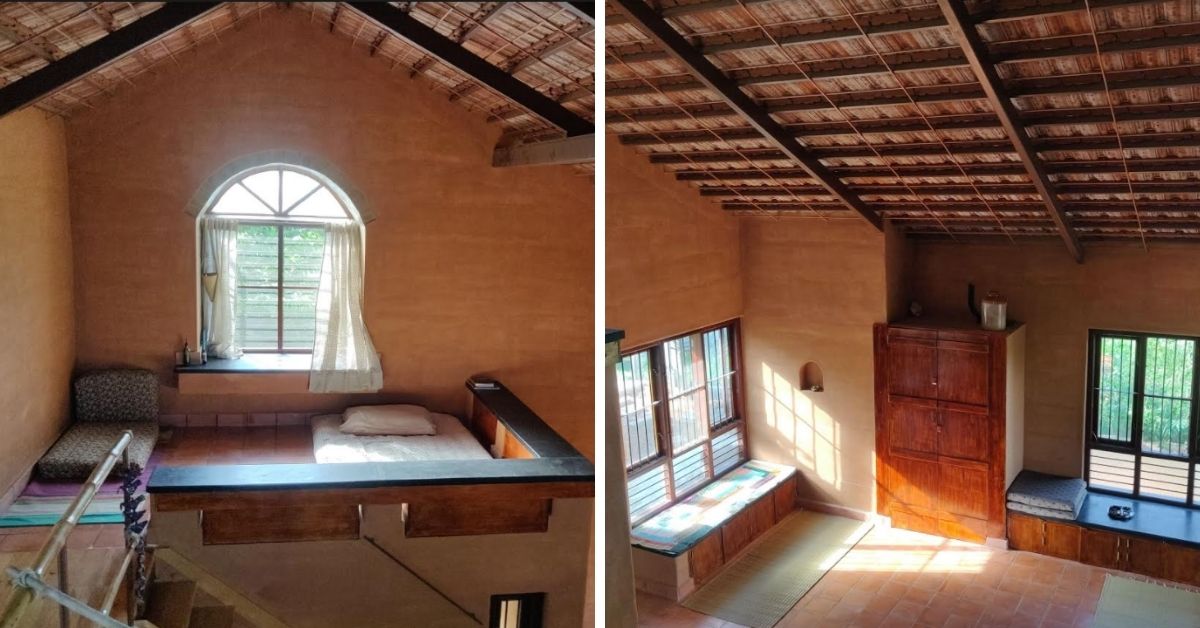
“The roof is porous, which means it does not retain heat, but at the same time, allows air to penetrate. Besides, it diverts the rainwater to the sump on the ground floor,” Mohan Shiva, an architect at the firm adds.
A pipe is used to connect the roof and the sump. Inside the latter, copper filters only allow the water to seep in and accumulate the waste at a place from which it can be removed manually.
The entire house boasts of open spaces and large windows to accommodate natural light and air. This is an exemplary feat, considering that the couple has not installed any light bulbs or fan in their house.
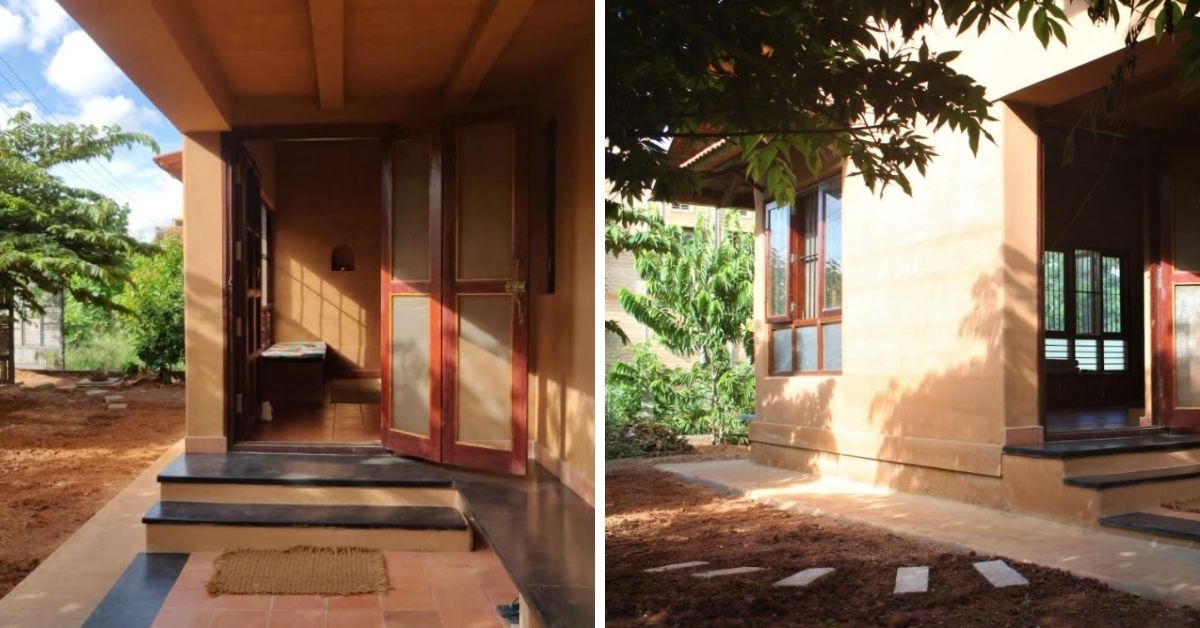
An eye-opener
Interestingly, having no lights in the house has helped the couple follow the circadian rhythm, which entails waking up at sunrise and winding the day with the sunset.
“We also don’t have any taps in the house. There’s only one hand-pump on the rainwater tank. This helps us use the water wisely. We also recycle our greywater,” Reva says.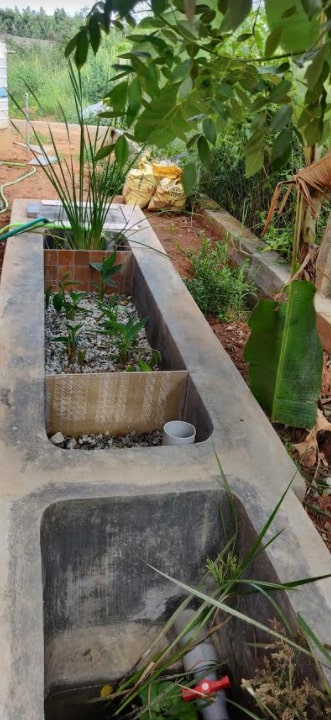
These changes have certainly brought Reva and Ranjan closer to nature. They have also started home-composting and growing their own food. From tomatoes and spinach to papaya, pumpkins and bottle gourds, the garden boasts of 40 varieties of produce.
In the process, the couple has also realised how modern-day conveniences can be a bane.
“We realised the value of water only when there was no tap in the house. It’s sad that we never fully realised the potential of harnessing the sun and rainwater. We take so many things for granted, but thankfully, our house has opened our eyes to sustainability. The joy of living with minimal resources is unmatched. Nothing from our house goes to waste, or in the drain. There’s enough for everyone’s needs,” Reva says.
After adapting to their new lifestyle, the Maliks recently switched to electric vehicles as well.
Get in touch with Mrinmayee at [email protected] or click here
Edited by Divya Sethu
This story made me
- 97
- 121
- 89
- 167
Tell Us More
We bring stories straight from the heart of India, to inspire millions and create a wave of impact. Our positive movement is growing bigger everyday, and we would love for you to join it.
Please contribute whatever you can, every little penny helps our team in bringing you more stories that support dreams and spread hope.






